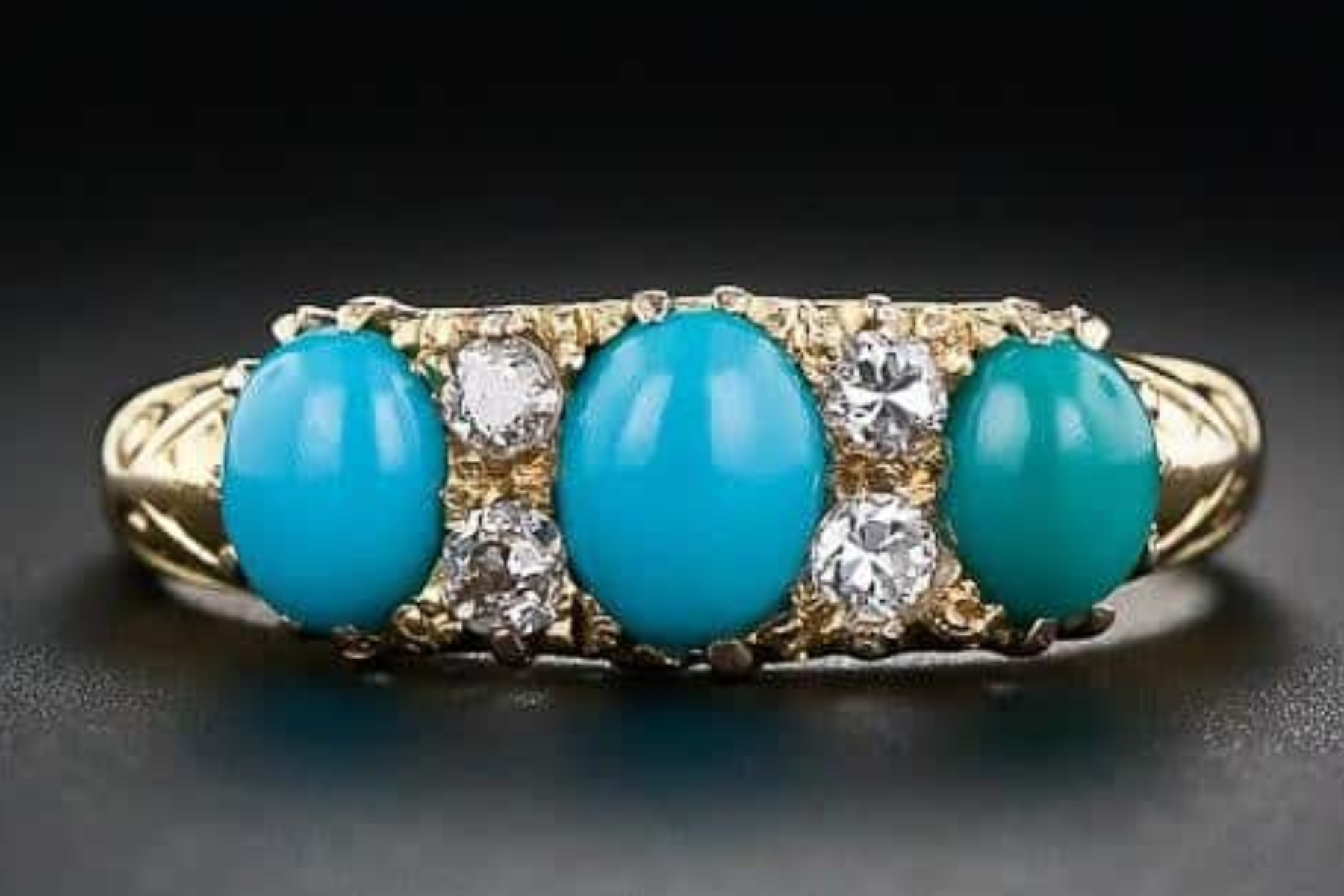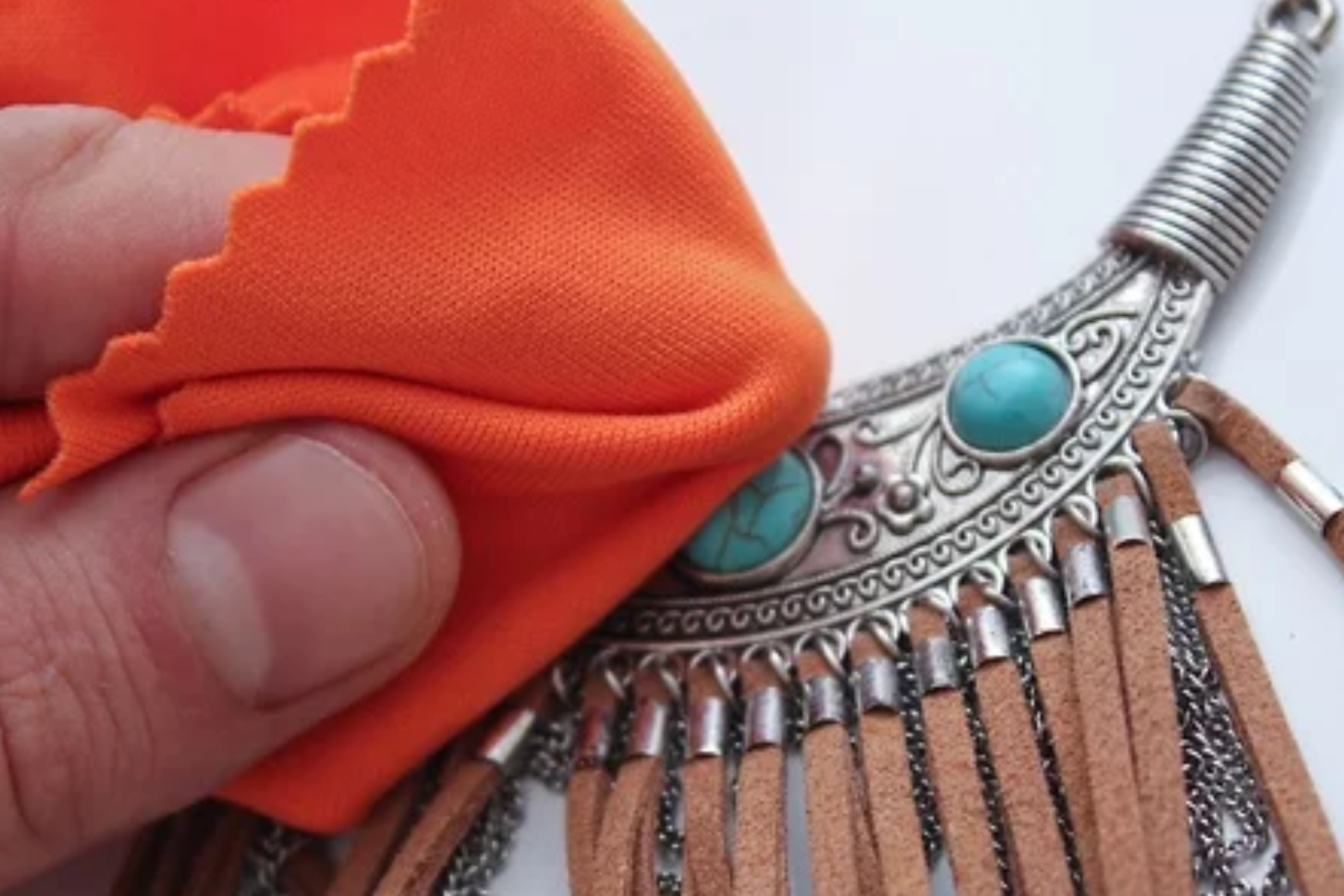If you are a researcher interested in learning more about turquoise vintage jewelry, this guide will provide you with the necessary information to get started.
Turquoisehas been used in jewelrymaking for centuries, with some of the oldest known pieces datingback to ancient Egypt.
The gemstone is prized for its vivid blue-green color and has long been associated with protection and healing properties. Vintageturquoise jewelry, in particular, has gained popularity in recent years for its unique designs and historical significance.
What Is Turquoise?
Turquoise is a hydrated phosphate mineral that typically forms in arid regions, such as the southwestern United States, Mexico, Iran, and China. Its distinctive blue-green color comes from the presence of copper and iron in the crystal structure.
Turquoise is a relatively soft stone, with a Mohs hardness of 5-6, making it susceptible to scratches and damage. It is also porous, which can cause it to absorb oils and other substances that can alter its appearance over time.
History Of Turquoise Jewelry
Turquoise has been used in jewelry making for thousands of years, with the earliest known examples dating back to ancient Egypt. It was also popular among the Persians, who used it to decorate their weapons and jewelry.
In the Americas, turquoise was revered by the Native American tribes, who believed that it had healing properties and could protect them from harm. The stone was often used in ceremonial objects and inlay work on pottery and other items.
During the Victorian era, turquoise became popular in Europe and was incorporated into elaborate jewelry designs.
The Art Deco period of the 1920s and 1930s also saw a resurgence of interest in turquoise, with designers creating bold, geometric pieces that reflected the modernist aesthetic of the time.
Characteristics Of Turquoise Vintage Jewelry
Vintage turquoise jewelry can be characterized by its unique designs and use of natural materials. The gemstone is often set in silver, which was a popular metal for jewelry making during the mid-20th century.
Turquoise vintage jewelry can range from simple, understated pieces to elaborate, ornate designs that incorporate other gemstones, such as coral or lapis lazuli.
How To Identify Turquoise Vintage Jewelry
Identifying turquoise vintage jewelry can be a challenge, particularly if you are not familiar with the characteristics of the stone and the styles of the era in which it was made. Here are some tips to help you identify turquoise vintage jewelry:
- Look for natural imperfections- Turquoise is a natural stone, and as such, it will often have imperfections, such as matrix or spiderwebbing. If the stone appears to be too perfect or uniform, it may be synthetic or treated.
- Check for signs of wear- Vintage jewelry will often show signs of wear, such as scratches or dings. If the piece appears to be in perfect condition, it may not be authentic.
- Look for hallmarks- Many vintage pieces will have a hallmark or maker's mark stamped on them. This can provide clues to the era in which the piece was made and the origin of the maker.
Investing In Turquoise Vintage Jewelry - What To Look For And What To Avoid
Turquoise vintage jewelry is not only a beautiful addition to any collection, but it can also be a valuable investment. However, it's important to know what to look for and what to avoid when investing in vintage jewelry.

Thrift Haul - My Vintage Turquoise Jewelry Collection
Here are some tips to help you make an informed decision when buying turquoise vintage jewelry:
- Quality- The quality of turquoise is one of the most important factors to consider when investing in vintage jewelry. Look for stones with a deep, rich color, and minimal visible veins or blemishes. High-quality turquoise should have a consistent color and texture throughout the stone.
- Rarity- Rare or one-of-a-kind pieces are often more valuable than mass-produced items. Look for vintage jewelry with unique designs, rare stones, or limited production runs.
- Provenance- The history and origin of a piece of vintage jewelry can greatly affect its value. Look for pieces with a documented history or a connection to a famous or notable individual or event.
- Condition- The condition of vintage jewelry is also important when considering its value. Look for pieces that have been well-maintained and are free of damage or repairs.
- Authenticity- When investing in vintage jewelry, it's important to ensure that the piece is authentic. Look for hallmarks, maker's marks, or other indicators of authenticity. Be wary of pieces that lack documentation or have questionable authenticity.
- Price- As with any investment, it's important to consider the price of vintage jewelry. While rare or unique pieces may command a higher price, it's important to avoid overpaying for a piece that may not hold its value over time.
When investing in turquoise vintage jewelry, there are also some things to avoid. Here are some red flags to look out for:
- Fakes - Be wary of vintage jewelry that is too perfect or too uniform in color or texture. Synthetic or treated turquoise may lack the natural imperfections found in genuine stones.
- Damage- Vintage jewelry with extensive damage or repairs may not hold its value as well as pieces that are in good condition. Be sure to inspect the piece carefully for signs of damage or wear.
- Incorrect Information- Be wary of sellers who provide incorrect or misleading information about a piece of vintage jewelry. Always do your research and ask questions to ensure that you are making an informed decision.
- Non-Reputable Sellers- Always buy vintage jewelry from reputable sellers who have a history of selling authentic pieces. Avoid buying from unknown or unverified sellers, as they may not have the expertise to properly identify and price vintage jewelry.
Investing in turquoise vintage jewelry can be a rewarding experience, both aesthetically and financially.
By following these tips and avoiding potential pitfalls, you can make an informed decision and build a collection of valuable and beautiful vintage jewelry.
How To Care For Turquoise Vintage Jewelry
Turquoise vintage jewelry requires special care to keep it looking its best. Here are some tips for caring for your vintage turquoise jewelry:
- Store it properly- Turquoise should be stored in a cool, dry place away from direct sunlight. Avoid storing it in a plastic bag, as this can trap moisture and cause damage to the stone.
- Clean it gently - Turquoise should be cleaned gently using a soft, damp cloth. Avoid using harsh chemicals or abrasive cleaners, as these can damage the stone.
- Protect it from chemicals- Turquoise is sensitive to chemicals, including those found in perfumes, hairsprays, and household cleaners. It's important to avoid exposing your vintage turquoise jewelry to these substances, as they can cause discoloration and damage to the stone.
- Handle it with care- Turquoise is a relatively soft stone and can be easily scratched or damaged. Be sure to handle your vintage turquoise jewelry with care, and avoid wearing it during activities that could cause it to be bumped or knocked against hard surfaces.
Where To Find Turquoise Vintage Jewelry
If you're interested in collecting or researching turquoise vintage jewelry, there are many places where you can find it. Here are some options to consider:
- Estate sales and auctions- Vintage jewelry is often sold at estate sales and auctions, and can provide a great opportunity to find unique pieces.
- Antique shops and dealers- Antique shops and dealers often carry vintage jewelry, and may have a selection of turquoise pieces to choose from.
- Online marketplaces- Online marketplaces, such as Etsy and eBay, can be great places to find vintage jewelry. However, it's important to do your research and only buy from reputable sellers.
People Also Ask
Is Turquoise Valuable?
The value of turquoise depends on a variety of factors, including its quality, size, and condition. High-quality turquoise can be quite valuable, with prices ranging from a few dollars per carat to thousands of dollars per carat for rare, top-quality stones.
How Can You Tell If Turquoise Is Real?
Real turquoise will often have natural imperfections, such as matrix or spiderwebbing. It may also have a slightly waxy or greasy feel to the touch. Synthetic or treated turquoise may be more uniform in color and lack imperfections.
What Are Some Popular Styles Of Vintage Turquoise Jewelry?
Some popular styles of vintage turquoise jewelry include Native American squash blossom necklaces, Victorian-era turquoise and diamondbrooches, and mid-century modernist turquoise and silver bracelets.
How Should I Store My Vintage Turquoise Jewelry?
Vintage turquoise jewelry should be stored in a cool, dry place away from direct sunlight. Avoid storing it in a plastic bag, as this can trap moisture and cause damage to the stone.
Conclusion
Turquoise vintage jewelry is a fascinating area of research, with a rich history and unique designs. Whether you're a collector, historian, or simply curious about the subject, understanding the characteristics of turquoise and vintage jewelry can help you identify and appreciate these beautiful pieces.
By following proper care and storage techniques, you can enjoy your turquoise vintage jewelry for years to come.

